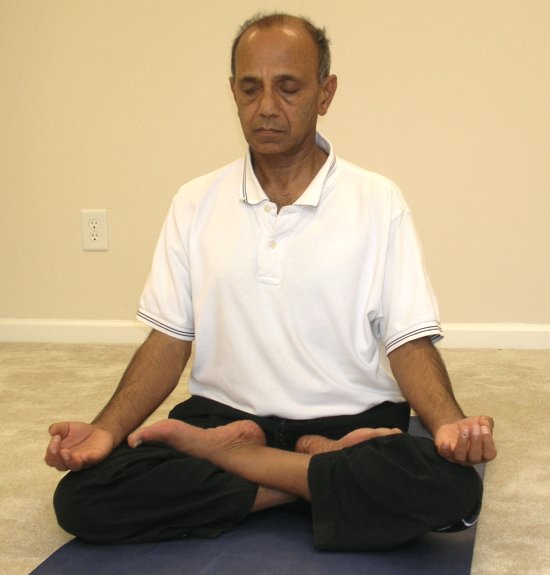
According to a recent news item that I came across on the net, researchers at the Liverpool John Moores University in UK found that meditation can actually help develop better brain power. In this study, the Buddhist technique of “mindfulness meditation” was used. On further Google search on meditation research, I found this extensive 472-page report, dated June 2007, produced by the Agency for Healthcare Research and Quality, U.S. Department of Health and Human Services. I have just glanced through the report and it seems to provide great details on studies conducted world-wide using a variety of meditation systems (including mantra, Buddhist, yoga, TaiChi etc.). At the end of the report there is a table listing world-wide meditation research activities and the major results found. It is a very impressive report and worth going through.
What is Meditation?
In the Yoga Sutras (Sutra 2, Chapter 3), Patanjali defines meditation as:
"ततà¥à¤° पà¥à¤°à¤¤à¥à¤¯à¤¯à¥ˆà¤•à¤¤à¤¾à¤¨à¤¤à¤¾ धà¥à¤¯à¤¾à¤¨à¤®à¥à¥¥à¥¨à¥¥" – tatra pratyayaikataanataa dhyaanam –
(click on the blue arrow to listen to an audio of the sutra)
" Uninterrupted flow (of the mind) towards the object (chosen for meditation) is meditation".
In other words, while in meditation, the mind will stay one-pointed on a single thought for an extended period of time without permitting the intrusion by other thoughts. It should be noted that meditation is both a state of mind as defined here as well as the technique employed to achieve that state. What causes the mind to be distracted? Well, there are two main sources of this distraction:
- Constant input from the five senses
- Even when there is no input from the senses, the mind has the uncanny ability to pull stuff out of its memory
So, our first objective in achieving a state of meditation is to bring the five senses under control. In yoga, this ability is called "pratyahara" (sense withdrawal) which is the fifth limb in the eight limbs of yoga. Some simple, commonly practiced techniques to achieve "pratyahara" include:
- Trataka (candle gazing)
- Yoga Nidra (yogic deep relaxation)
- Slow, deep breathing techniques, e.g., Alternate Nostril Breathing
- and more…
Once the senses have been subdued, the next step is to try and focus the mind on a single object of meditation .Without this focus, the mind will constantly dip into the memory and keep getting distracted with past impressions (samskaras), hidden desires (vasana) and other emotions (anger etc). This step, focus or concentration, is called Dharana and is the sixth of the eight limbs of yoga. Here, any object, physical or mental, can be used to develop one-pointedness of the mind. A physical object could be a part of the physical body (third eye, tip of the nose, any of the seven chakras etc.) or it could be an image of an external object (image of a deity, for example). In many traditional meditation techniques, repetition of a mantra (a specific sound vibration) is used to stay focused. When "dharana" can be maintained for some length of time, it automatically gets converted to meditation. When the mind can be made to enter the state of meditation repeatedly, it "learns" to stay calm in stressful situations, can overcome the negative impact of emotions like anger, jealousy etc. Meditation can help the mind get rid of the clutches of ego which is the root cause of desires and suffering. Meditation can lead to a sharper intellect which, instead of being driven by the ego, can become more aware of the oneness with the soul or "atma" which is our true being.
Guidelines for Meditation
- Meditation should be practiced on an empty stomach, preferably in the early hours of the morning. Time permitting, meditation should also be practiced in the evening.
- It is recommended that one should find a clean, quiet area for meditation. Once the practice is established, the same location should be used everyday. Preferably the location should be away from door bells or telephones so there are no distractions.
- In the Hatha Yoga tradition, meditation is usually practiced after performing asana (physical postures), relaxation and pranayama (breathing techniques). As a result of these practices, the body and mind are better prepared to sit for meditation.
- Any comfortable sitting posture can be used for meditation. If sitting on the floor is uncomfortable, one can sit in a chair.
- During meditation, it is important to maintain a perfectly still body. The spine should remain upright, shoulders relaxed with the hands resting comfortably on the knees or thighs.
- The recommended duration for meditation is 20 to 30 minutes. The duration can be adjusted up or down depending upon the availability of time.
A Guided Meditation Technique
Different yoga traditions adopt different approaches to meditation. For example, in the Buddhist tradition, "mindfulness meditation" and "Vipassana meditation" are commonly practiced. In the Kundalini yoga, "chakra meditation" is practiced. As mentioned above, in many traditions, some form of "mantra meditation" is practiced. Since "pratyahara" (sense withdrawal) is an important pre-requisite for achieving a state of meditation, I have recorded a guided meditation session that will help you attain a state of ‘pratyahara’ (sense withdrawal). At the end of the audio instructions, you may continue with your own mantra meditation or breath awareness to further still the mind. To receive instructions on how to access this audio file, please write to me at subhash@yogawithsubhash.com or add a comment to this post.
Hi great blog. Meditation is a great, nice to hear about the research. Meditation makes me feel more alert and enhances my day to day experience of the world.
[…] more here: Yoga with Subhash · Meditation VN:F [1.6.7_924]please wait…Rating: 0.0/5 (0 votes cast)VN:F [1.6.7_924]Rating: 0 (from 0 […]